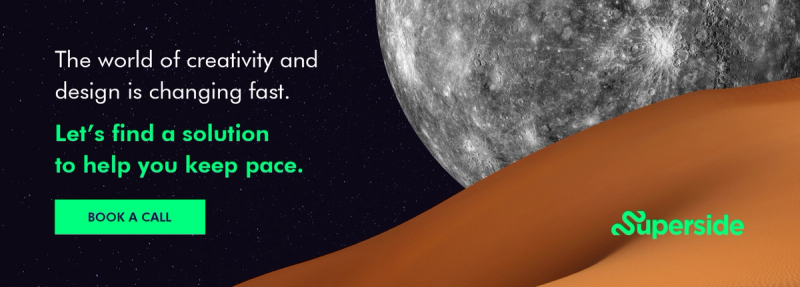Cave Paintings to PowerPoint: The Evolution of Presentations


The importance of presentations cannot be emphasized enough. Whether it be to sell a business product, to pitch a new startup, to train new employees, or to motivate an audience, presentations are a fundamental component in the business and communication ecosystem.
The quality of a presentation can truly make or break a person’s or business’ success. From AirBnB’s epic pitch deck that launched the startup into the world of travel to Steve Jobs’ worldwide introduction of the Macintosh and everything in between, presentations open many doors for a business to communicate with audiences both small and large.
As presentations are such important tools in today’s world of business and communication, we thought it would be interesting to look back on how the earliest presentations evolved and adapted to give us the presentations that we see today.
What is a Presentation?
First things first, what is a presentation? A presentation is a communication method that can be adapted depending on the speaking situation and audience. It requires the presenter to get a message across to the listeners and, therefore, usually incorporates a persuasive element.
Check out the key elements of a presentation below:
- Context (where the presentation will be delivered, formal versus informal, small or large audience, equipment used, etc.)
- Presenter
- Audience
- Message
- Reaction
- Method
- Influencing Factors
Presentations come in all different shapes and sizes, meaning there are various purposes and reasons as to why people use them. It could be an informative presentation or an instructional presentation that teaches the audience something. It could also be a persuasive presentation, in which a business is asking for funding or entrepreneurs are pitching a new business idea.
Whatever the goal of the presentation may be, they offer unparalleled benefits to a business when done effectively.
The History of Presentations
Before we look back on some of the earliest slide presentations, it’s important to understand just how far back presentations go. Just to give you a hint, presentations were around long before PowerPoint was even a thought – or technology, for that matter.
The truth is, people have been presenting their ideas from the beginning. Centuries have witnessed the dawn of technology and revolutionary ideas and through it all, one truth has prevailed: humans are social beings and have always had an innate need to communicate information.
Cave paintings in Lascaux, France, that date back to 15000 B.C. indicate that the earliest presentations came into existence in man’s earliest days. And in 3500-3000 B.C., murals and hieroglyphs emerged as a means of communication. It wasn’t until 1350 that bar graphs were introduced, followed by the blackboard in 1653 that we are all too familiar with from elementary school days. The overhead projector emerged in 1945 and planted the seed for what would evolve into presentation software.
It’s safe to say that most adults are familiar with overhead projectors, either through classroom presentations or from presenting firsthand. The first slides ever used in this now ‘ancient’ device were crafted by hand, requiring highly skilled designers and technicians – and a hefty sum of money.
Overhead projectors used transparent slides with printed information on them. The slides would then be placed on the projector and presented on a screen. While this method of presenting was by no means cheap, it definitely had its perks. Presenters could make notes and highlight slide areas that they wanted audience members to focus on during a presentation.
The overhead projector dominated business, school, and classroom presentations throughout the second half of the 1900s and even some time after presentation software was first introduced.
Presentation Characteristics Before PowerPoint
There are certainly a few common threads between the early presentation slides. First, slides were expensive at the time, which made them a valued method of communication. Most slides of the earliest days did not contain a significant volume of content or illustrations due to the expenses and time it took to handcraft each slide.
Another trend among the pre-presentation software slides is in regards to the presentation creators. Today, anyone can create a presentation and most are even expected to know at least the basics of presentation software. But the early presentations differ in that not everyone was expected to know how to create presentations. In fact, creating slides was viewed as a major skill and a full-time job.
Finally, early presentations had one other characteristic in common: their deadline. Presentations had to be completed far in advance so that the presenter had adequate time to rehearse. Because additional slide information meant more expenses, presenters had to practice their presentations many times to know their material inside and out.
This all changed in the late 1980s when PowerPoint was born, irreversibly altering the way we deliver information.
Let’s take a look at the evolution of presentations from the pre-PowerPoint era to present time.
The ‘50s
General Electric (1958)
GE’s slides from 1958 demonstrate a significant lack of design and visual effect compared to the presentations we see today. As explained, slide presentations were not a cheap method of delivering information at this time. So it makes sense that the presentation forefathers stuck to a highly conceptual, simple slide layout.
IBM Talk Given at KU (1959)
Source: Computer History Museum
This Talk Given at KU for the IBM Project Stretch demonstrates no computer-designed elements. The content is completely handwritten and would have been delivered to an audience via overhead projector. The slides would have served primarily as a visual point of reference for audience members, rather than a visually impactful presentation.
IBM’s Premiere of Products (1959)
Source: Computer History Museum
This brochure by IBM reveals several of IBM’s data processing systems, printed in blue and black font color on white paper. The black and white photographs demonstrate the lack of color diversity and graphic design elements in the early presentations.
The ‘60s
Donald Knuth’s Computer Languages (1963)
Source: Computer History Museum
PowerPoint still had not yet made an appearance in the 1960s, which meant that presenters continued to rely on slides that offered no visual effect. This presentation on Computer Languages by Donald Knuth shows mostly text and some graphs. There is no visual appeal to the slides, as it is entirely in black and white and much more content-heavy than the presentations we would see today.
General Electric’s Numerical Control Programming Presentation (1968)
Source: Computer History Museum
We can infer from GE’s Numerical Control Programming presentation of 1968 that the company probably invested a great deal into these slides. We already know that creating slides was more expensive before we had PowerPoint to do it for us. To create such text-heavy slides that also included the black and white images probably was not a cheap project for the company at this point in time.
The ‘70s
Shattering Goblets with Amplified Singing (1973)
Source: Computer History Museum
These slides from the early ‘70s include a bit more of a design element, with the company logo on the first slide to the left. However, the graphics included in this presentation still represent a serious lack of advanced computer design skill. The graphics are evidently inserted for visual reference rather than overall effect.
Packing, a Recurring, Recursive Problem (1976)
Source: Computer History Museum
While this presentation boasts more visual appeal than past text-heavy presentations, it is still far different than the slide decks we see today. The text is obviously handwritten with whole photographs that do not include or incorporate any text layering. This presentation would have been delivered on an overhead projector, with the photos included as points of reference for the audience.
IBM (1979)
It is evident that IBM’s 1979 presentation began pushing the envelope of the presentation design standard. This presentation implemented bolder fonts and shapes, with a focus that extended past content and into the slide’s visual dynamics.
The ‘80s
Apollo Guidance Computer (1982)
Source: Computer History Museum
In this presentation designer Eldon Hall is turned towards the projector screen and is referring to the black and white images. These images have no color to them but are projected on the screen to help teach the audience about the Apollo Guidance Computer Design.
The Computer that Calls Itself (1985)
Source: Computer History Museum
Starting to look a bit more familiar? These slides were used in presentations by John Imlay and certainly demonstrate a bit more similarities to modern presentations. With color graphics and different font types in bold layered onto the image, advancements in design technology is clearly evident in these slides.
The Dawn of PowerPoint (1987)
PowerPoint was finally launched in 1987 on the Macintosh and revolutionized the way people would give presentations for decades to come.
The early PowerPoint version had low-res and pixelated graphics, but could still add text and graphics, as well as sort slides. The highly conceptual early slides of the 1900s that primarily illustrated written content were no longer enough. Moving forward, presentations would be expected to step it up with compelling visuals and high-tech design.
The ‘90s
Informix Corporate Image and Brand (1990)
Source: Computer History Museum
While PowerPoint was already introduced to the world by the late 1980s, it took some time for companies, schools, and presenters to hop on the presentation software bandwagon. These slides appear to be for overhead projector presentations. However, they certainly demonstrate more modern presentation elements, with less text that is organized in a more visually appealing way – bullet points, diagrams, etc.
Dataquest Day (1991)
Source: Computer History Museum
This Dataquest National Day presentation is also proof that the overhead projector was still alive and well in the early ‘90s – you can see the handwriting on the slides that was clearly added during the presentation. The text is more concise and better organized into an easy-to-read slide format. But there is still no color or ‘wow’ factor in terms of design.
The ‘00s
While the presentations of today are used for various purposes, they are extremely popular among aspiring startups. Today, everyone has access to PowerPoint software and slides are not nearly as expensive to create as they were before PowerPoint – in fact, unless you hire someone to perfect the slides, they are free!
This easy access to presentation software combined with the all-powerful digital era of the 21st century has essentially established a requirement for startups to craft visually compelling slide decks if they wish to launch their business.
Let’s take a look at some of the more recent presentations and pitch decks that have emerged since the launch of PowerPoint.
LinkedIn (2004)
LinkedIn’s 2004 pitch deck presentation represents the drastic changes that slides experienced from the earliest presentations to the post-PowerPoint era. You can see that the company was able to insert a graphic of their logo and also incorporated many graphics, shapes, and tables throughout the pitch deck.
The ‘10s
A significant development occurred in 2011 with Office 365, which allowed PowerPoint users to create and collaborate in the cloud. This past decade has witnessed countless pitch deck designs and presentations that push the boundaries of design and visual effects, while still upholding the principle of simplicity.
AirBnB
One of today’s most iconic startups is AirBnB, the online hospitality platform. But like all others before it, this startup needed a strong presentation if it wanted to successfully enter the market. This early AirBnB pitch deck presentation demonstrates unique font type and illustrates a consistent design and color scheme of blue and white. This presentation delivers clear, punchy content in an easy-to-read presentation.
Tinder (2012)
Another presentation that made it to the ‘pitch deck hall of fame’ is the Tinder pitch deck presentation, previously known as Matchbox. While it may not be the most visually striking presentation, Tinder triumphed in sparking audience emotion within the first few slides. The company wasted no time stating the problem – a problem that everyone could relate to – followed by the solution: Tinder.

Moving Forward: The Future of Presentations
The presentations that we know today in 2019 may become unidentifiable in the years to come. Virtual reality and augmented reality paired with the use of headsets are predicted to bring about significant change in the way we deliver and experience presentations.
Virtual reality headsets will transport audience members into the actual presentation, creating 360-degree experience. Augmented reality headsets will be used to transform the presentation space into one giant canvas, where the presentation information is displayed digitally on the walls. These innovative technologies could greatly enhance the experience of pitching to potential investors and could be especially effective if you're looking to sell your business.
Presentations are no longer about what information is being shown, but how it is being shown. With such substantial changes to presentation software on the horizon, new standards will surely evolve and we will adapt as we always have.
Despite past and future advancements in the way humans deliver information, one thing has remained constant: the need to deliver information. This need has stood the test of time since the first cave paintings of 15000 B.C. and will continue to do so for as long as humans have something to say.
Built to be an extension of in-house teams, we deliver fast, scalable, world-class design and creative solutions to over 450 globally renowned companies such as Amazon, Meta, Salesforce and Google. Connect with us on LinkedIn.
You may also like these

15 Corporate Presentation Design Ideas & Services for 2025
Compelling presentations are deal-makers: They captivate audiences and drive decisive outcomes.In fact, the visual storytelling research is pretty convincing. 85% of people remember what they observed in a presentation three hours later, compared to 70% who recall what they heard. After three days, 60% remember the images, but only 10% remember the spoken content.Your presentations must be first-rate. They should simplify complex ideas, showcase information in an easy-to-grasp way, and tell persuasive stories.As an industry leader in corporate presentation design, Superside combines innovative tools, creative expertise and strategic thinking to craft professional visual stories for customers worldwide.You'll find the info on this page invaluable if you’re looking for the best enterprise presentation design service. Superside’s team shares a few killer corporate presentation design ideas to help you lift your game.
Top 13 AI Presentation Makers of 2025: Curated List
Wasting time trying to get outdated presentation tools to do what you want them to do? You’re not alone. Thirty-one percent of professionals say presentations take up too much time, with 60% taking at least a couple of hours to compile a 10-slide presentation and 12% taking almost an entire week.If you’re still spending countless hours producing slide after slide, it’s time to tap into the power of AI. Today’s AI presentation tools offer various features—from automated design suggestions and real-time collaboration with team members to intelligent data visualization and speech-to-text functionalities. For many professionals, they’ve become a lifeline.At Superside, we produce designs with AI-enhanced capabilities daily, using presentation design best practices and smart human thinking to develop impactful decks for our customers. To help you get started with AI, we’ve curated a list of the best AI presentation tools in 2025.How Does an AI Presentation Maker Work?
50+ Best Free PowerPoint Templates & Sites for Your Presentations
We know you’re busy, and we know you probably use PowerPoint every day, but designing a presentation can be daunting.Not only do you have to worry about the content, but also how it will look when projected onto a screen.We’ve firsthand experience in this matter—at Superside, we’ve crafted thousands of PowerPoint presentations for our customers over the years.Over 30 million PowerPoint presentations are created every day, and even so, finding the perfect template for your project is certainly not an easy task.But you shouldn’t let that stop you from creating an amazing presentation—we've got you covered, and to help save you time and effort, we’ve collected 50+ free PowerPoint templates that will earn huge presentation style points for you.






